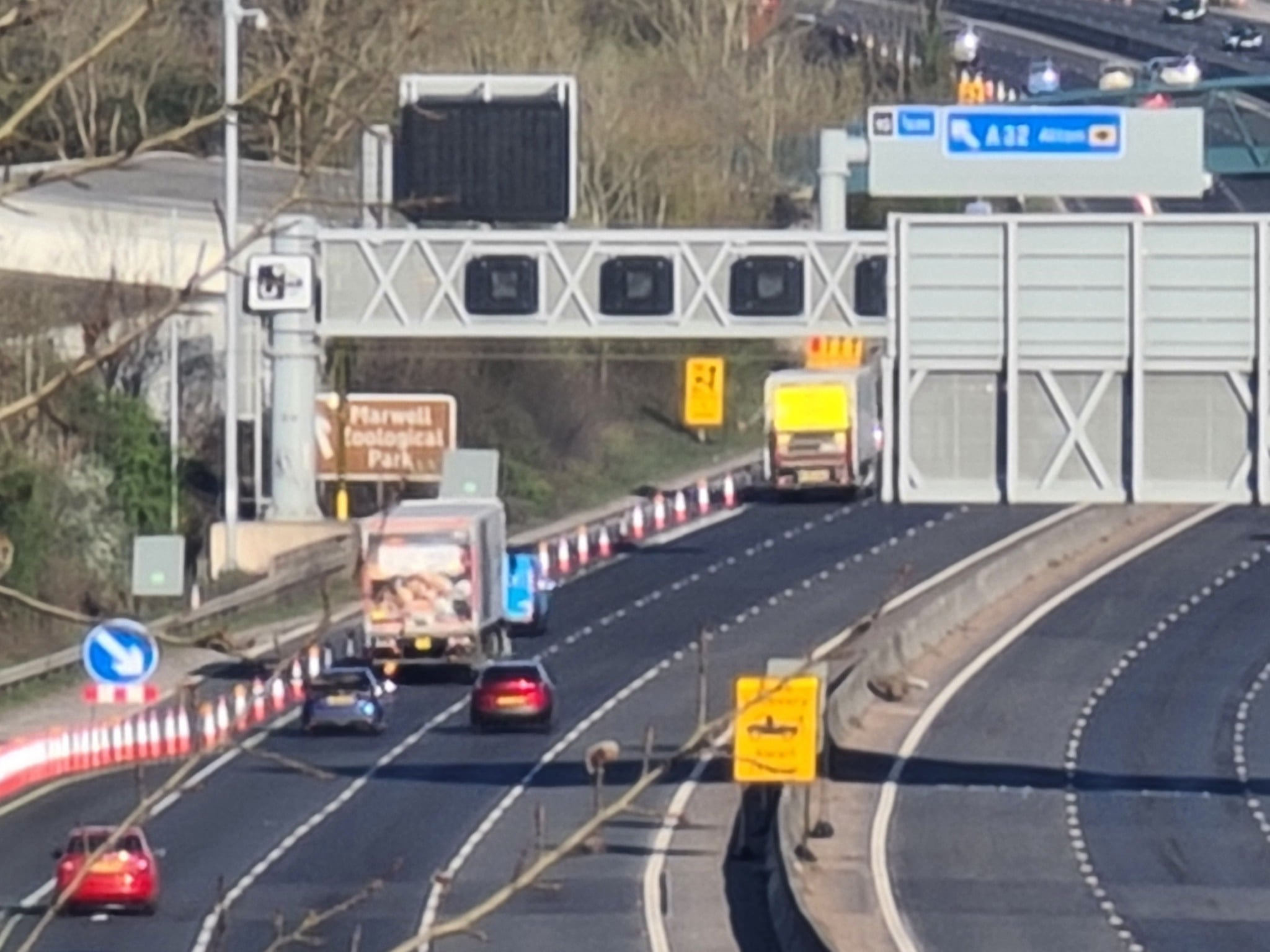
JOINING THE MOTORWAY
From a point of view of difficulty/danger, Joining a motorway is possibly, when learning to drive, the hardest skill to master compared to driving on them or leaving them.

From a point of view of difficulty/danger, Joining a motorway is possibly, when learning to drive, the hardest skill to master compared to driving on them or leaving them.
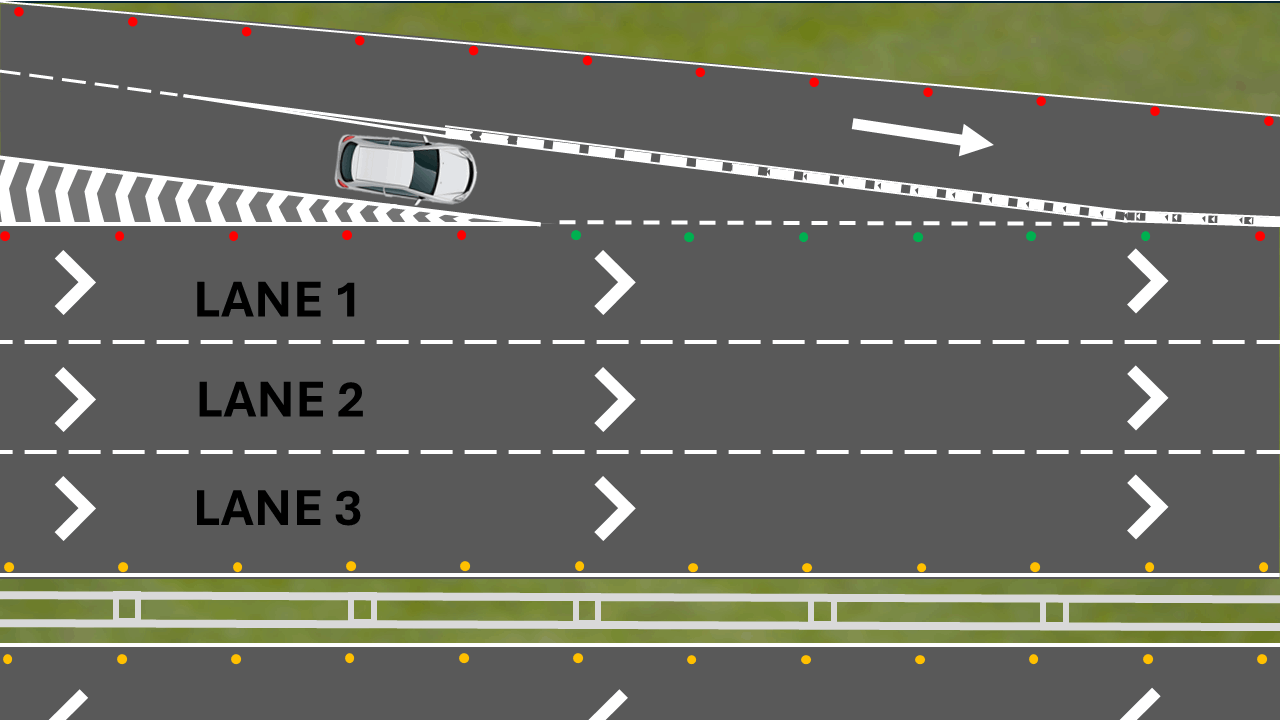
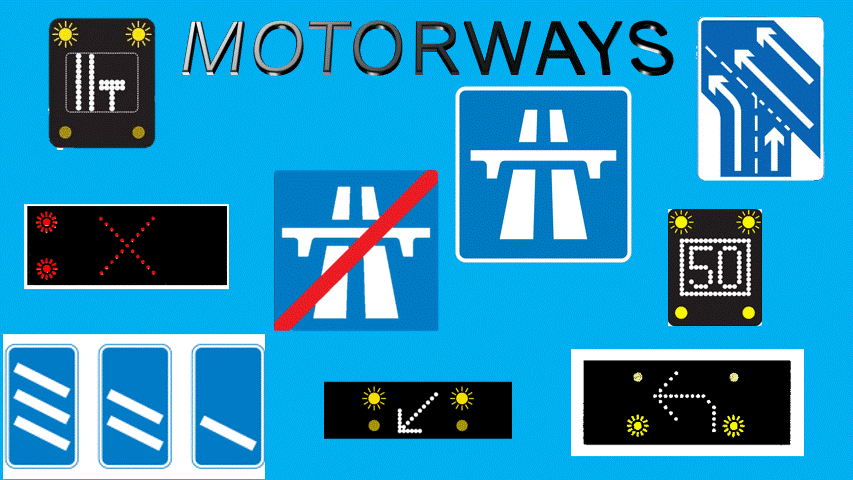
There are lots more than shown here, so make sure you know what they mean.
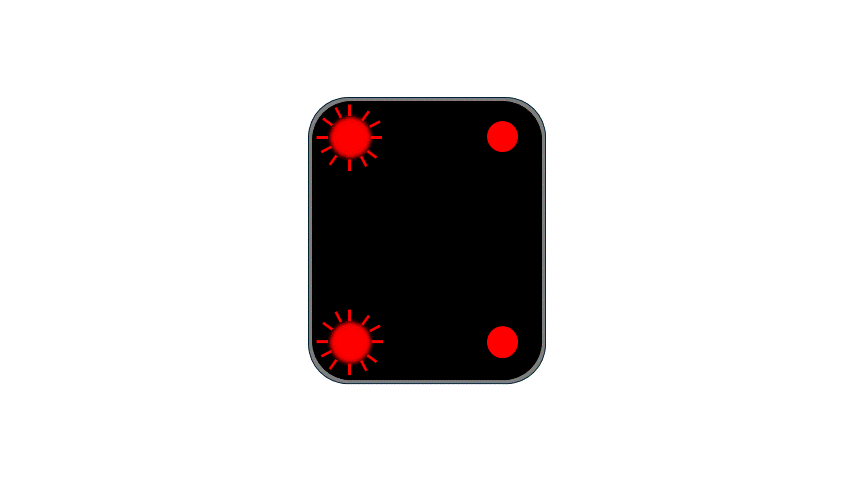
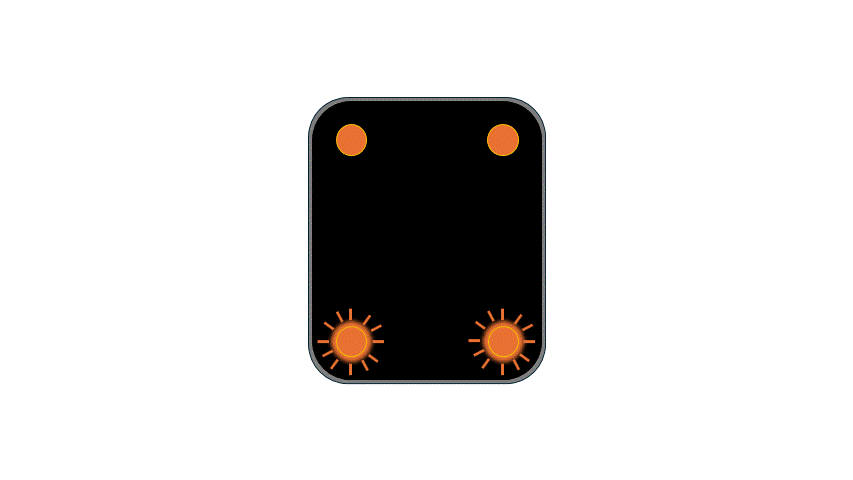
Unless you are a FULL licence holder it is illegal to Drive on the Motorway unless you are in a fully qualified Approved Driving Instructors vehicle that has Dual Controls.
Fully qualified Approved Driving Instructors can now teach learners during their driving lessons as long as the vehicle is fitted with Dual Controls.
This will, over the next decade, become a massive improvement for road safety, as the numbers of drivers who know the
"rights and wrongs" of motorway driving.
This has been a long time coming, but was imperative that it happened with the larger volumes of traffic now on the roads.
Drivers in years gone by, just passed their tests and were pretty much left to their own devices to work out how to drive motorways correctly, and this to be honest didn't work extremely well.
Knowing who has priority, understanding who could or could not use all three lanes, what the correct speed limits are for certain vehicles, centre lane hogging and not understanding it is now illegal, tailgating, and so many other subjects were never really discussed, and drivers just thought what they were doing was ok. Sadly, we now have generations of drivers who think they know how to drive on them because it's how they have always driven on them.
But that has now come to an end, and new drivers will gain the knowledge that should have been taught years ago, and given time there will be a larger volume of drivers who know what should be done correctly as opposed to those who don't drive motorways correctly currently.
Without a doubt, the 1st BIGGEST MISTAKE drivers of Motorways make and is without a doubt the most dangerous to them and all other motorway users is
BEING TOO CLOSE TO THE VEHICLE IN FRONT OF THEM!
Way too may drivers without giving it a seconds thought will drive as close to the car in front of them as they would if they were driving on a 30mph road!
At 30mph the stopping distance is 23 Metres
At 70mph the stopping distance is 96 Metres!
So do the maths for yourself.
If you think that sitting at the same distance from the car in front of you as you would when driving 30mph whilst you are doing 70mph...........
what's the likelihood you'll stop before hitting the car in front in an emergency?
I'll answer it for you.......it's ZERO
The second biggest example of extremely poor driving is
CENTRE LANE HOGGING
(or on Smart Motorways LANES 2, 3 or 4)
It is now an offence to Lane hog.
This could lead to a fixed penalty notice and points on your licence.
The rules could not be any simpler.
LANE 1 is the NORMAL DRIVING LANE.
If you are not:-
1. Overtaking.
2. Positioning into lane 2 for slip on or off lanes to assist vehicles entering or leaving the motorway.
3. Positioning for a lane that is moving off to a different destination and if you did not swap lanes you would be going to the wrong destination.
THEN YOU ARE IN THE WRONG LANE/S, AT ALL OTHER TIMES LANE 1 is where you should be.
Unless any of the above situations are occurring.
To Join the Motorway, firstly look at any signs as you approach the slip on lane to see if by selecting a particular lane it will assist with the ease of you joining it.
Ideally look for a lane that does not need to merge with other traffic.
If a non merge lane is not available then consider increasing your speed to match that of traffic that is already on the Motorway.
Use the MSPSGL routine early and adjust your speed to suit traffic that is already on the Motorway so that you can blend in without causing others to change speed or direction.
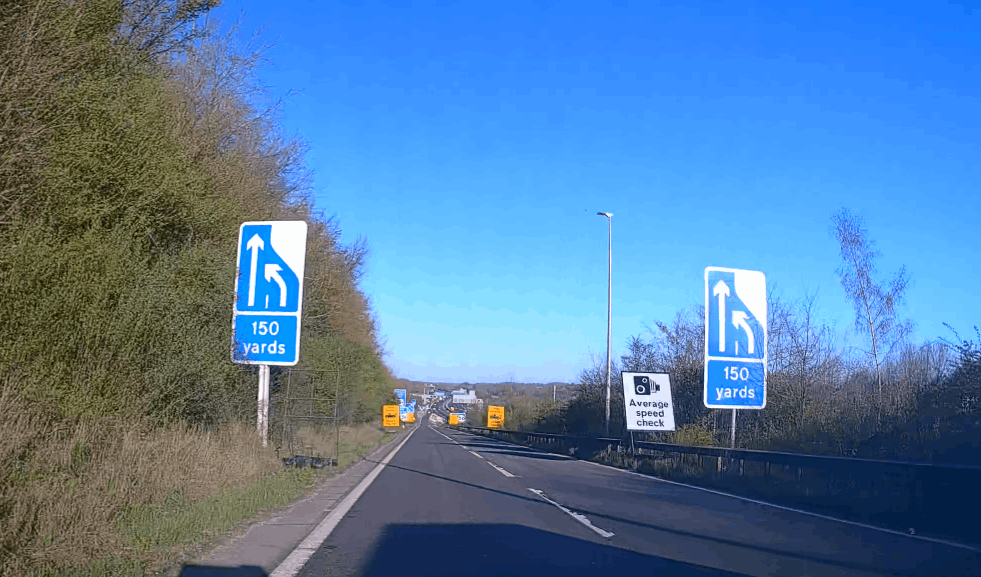
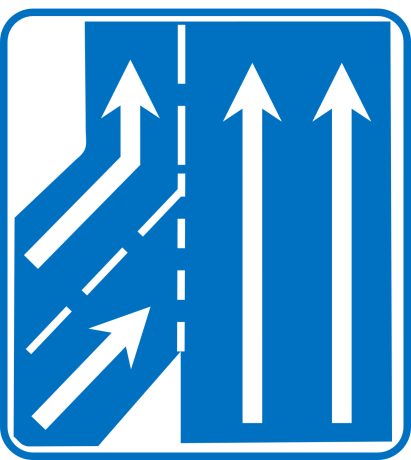
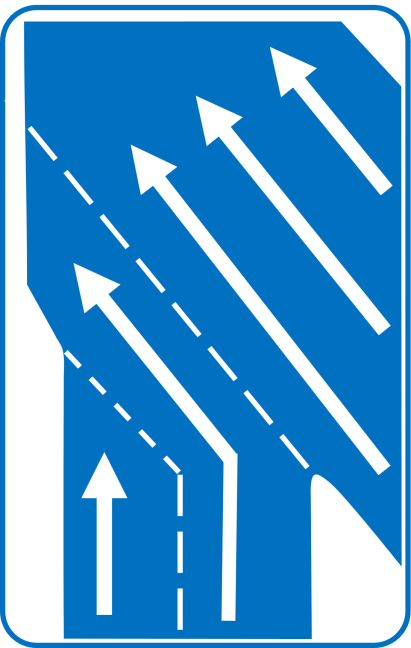
Looking out for the signs as shown when entering a slip road and selecting the lane which creates a new lane onto the motorway, is without a doubt safer, but also a great opportunity for someone new to motorways to get used to building speed to join the flow of traffic already on the motorway.
The answer to this is that there are NO fast and slow lanes.
There are Lanes 1, 2, 3 and possibly 4.
ALL OF THESE LANES CARRY A MAXIMUM SPEED LIMIT OF 70 MPH
Lane 1. Is the NORMAL DRIVING LANE
LANES 2, 3, & 4 ARE ALL FOR OVERTAKING ONLY
It may be that you are approaching a slip on or off lane, and it may be more suitable to be positioned in lane 2 to assist those who are exiting or joining the motorway. However, once you have cleared the slip on / off lane, if you are not overtaking you should return to Lane 1.
It may be that the motorway is soon to split in two taking traffic to different destinations, possibly lanes 1 & 2 going in one direction and lanes 3 & 4 going to a different destination. Obviously, you would not want to be changing lanes right at the last second as this would be dangerous. The recommendation is to be in the lane for your destination about 1 mile away from where the motorway splits. This is the same rule about exiting a motorway at a slip lane, you should always be in lane 1 within 1 mile of your exit.
Lane hogging on a motorway is a criminal offence and a breach of the Highway Code.
Highway Code Rule 264
Keep in the left lane unless overtaking.
If you are overtaking, you should return to the left lane when it is safe to do so (see also Rules 267 and 268).
Be aware of emergency services, traffic officers, recovery workers and other people or vehicles stopped on the hard shoulder or in an emergency area.
If you are driving in the left lane, and it is safe to do so, you should move into the adjacent lane to create more space between your vehicle and the people and stopped vehicles.
Highway Code Rule 263
Unless directed to do so by a police or traffic officer, you MUST NOT reverse along any part of a motorway, including slip roads, hard shoulders and emergency areas, cross the central reservation, drive against the traffic flow.
If you have missed your exit, or have taken the wrong route, carry on to the next exit.
Highway Code Rule 265
The right-hand lane of a motorway with three or more lanes MUST NOT be used (except in prescribed circumstances) if you are driving
any vehicle drawing a trailer.
A goods vehicle with a maximum laden weight exceeding 3.5 tonnes but not exceeding 7.5 tonnes, which is required to be fitted with a speed limiter.
A goods vehicle with a maximum laden weight exceeding 7.5 tonnes.
A passenger vehicle with a maximum laden weight exceeding 7.5 tonnes constructed or adapted to carry more than eight seated passengers in addition to the driver.
A passenger vehicle with a maximum laden weight not exceeding 7.5 tonnes which is constructed or adapted to carry more than eight seated passengers in addition to the driver, which is required to be fitted with a speed limiter.
Highway Code Rule 266
Approaching a junction. Look well ahead for signals, signs and road markings. Direction signs may be placed over the road. If you need to, you should change lanes well ahead of a junction. At some junctions, a lane may lead directly off the road. Only get in that lane if you wish to go in the direction indicated by signs or road markings.
Highway Code Rule 267
Do not overtake unless you are sure it is safe and legal to do so. Overtake only on the right.
You should check your mirrors.
Take time to judge the speeds correctly.
Make sure that the lane you will be joining is sufficiently clear ahead and behind.
Take a quick sideways glance into the blind spot area to verify the position of a vehicle that may have disappeared from your view in the mirror.
Remember that traffic may be coming up behind you very quickly. Check all your mirrors carefully. Look out for motorcyclists. When it is safe to do so, signal in plenty of time, then move out.
Ensure you do not cut in on the vehicle you have overtaken.
Be especially careful at night and in poor visibility when it is harder to judge speed and distance.
Highway Code Rule 268
Do not overtake on the left or move to a lane on your left to overtake. In congested conditions, where adjacent lanes of traffic are moving at similar speeds, traffic in left-hand lanes may sometimes be moving faster than traffic to the right. In these conditions you may keep up with the traffic in your lane even if this means passing traffic in the lane to your right. Do not weave in and out of lanes to overtake.
Highway Code Rule 269
Hard shoulder (where present). You MUST NOT use a hard shoulder except in an emergency or if directed to do so by the police, traffic officers or a traffic sign.
Hard shoulder (where used as an extra lane). The hard shoulder is used as an extra lane on some motorways during periods of congestion. A red ‘X’ or blank sign above the hard shoulder means that you MUST NOT use the hard shoulder except in an emergency.
You can only use the hard shoulder as an extra lane when a speed limit is shown above the hard shoulder.
Where the hard shoulder is being used as an extra lane, emergency areas are provided for use in an emergency
Highway Code Rule 270
Emergency areas are located along motorways with no hard shoulder or where the hard shoulder can be used as an extra lane (see Rule 269) and MUST only be used in an emergency.
They are marked by blue signs with an orange SOS telephone symbol and may have orange surfacing.
Highway Code Rule 271
You MUST NOT stop on any carriageway, emergency area, hard shoulder, slip road, central reservation or verge except in an emergency, or when told to do so by the police, traffic officers, an emergency sign or by red flashing light signals.
Do not stop on any part of a motorway to make or receive mobile telephone calls, except in an emergency.
Highway Code Rule 272
You MUST NOT pick up or set down anyone, or walk on a motorway, except in an emergency.